Chemical peeling is a popular cosmetic facial treatment that promotes skin renewal, rejuvenation, and regeneration. It has no age restrictions, but before deciding whether to carry out in the salon or at home, it is important to consider the pros and cons, as well as the features of the procedure.
What is chemical peeling
The name comes from the English "peel" - to scrape, sand. The essence lies in the exfoliation of the upper layer of the epidermis, consisting of dead cells, using special chemical compounds. Exfoliation activates the processes of natural renewal, tissue and cell regeneration, the synthesis of natural elastin, collagen, hyaluronic acid.
Peeling has a deep effect that helps to improve the aesthetic condition of the epidermis, providing rejuvenation without surgery. The course can be carried out to restore tone, elasticity of the facial areas, neck, décolleté, hands, since these areas are most susceptible to aging.
The rejuvenation program, including peeling, has no age restrictions. Depending on the degree of the cosmetic problem, the number and frequency of sessions, the choice of active components of the chemical composition and its concentration are individually calculated.

 Don't miss the most popular column article: Facial massage according to the system of the Japanese doctor Asahi Zogan.
Don't miss the most popular column article: Facial massage according to the system of the Japanese doctor Asahi Zogan.Types of chemical peels
When deciding to carry out chemical peeling of the face, the pros and cons must be taken into account, as well as familiar with the existing types of exfoliation.
According to the degree of impact, they are distinguished:
- Surface. As painless as possible, easily tolerated by patients, characterized by a minimal risk of side effects. Exfoliation is carried out in the upper stratum corneum, indicated for prevention, correction of the first age-related changes. The active ingredients of the composition are alpha hydroxy acid concentrate. Acids (malic, citric, glycolic, lactic) in a minimal molecular compound help to eliminate hyperpigmentation, fine mimic wrinkles, and help to narrow pores.
- Median. The active substances act within the living layers of the dermis, up to the basement membrane. It contains retinoids, 20% acetic acid, 30% trichloroacetic acid solution, phenol or azelaic acid. The procedure is characterized by a deeper effect, allows you to even out turgor, eliminate scars, scars, stretch marks, hyperpigmentation, signs of photoaging.
- Deep. Belongs to the category of dermatosurgical procedures. The depth of penetration is from the papillary layer to the reticular layer of the dermis. Phenol is used as an active ingredient, a solution of 35-50% TCA. The course allows for deep correction, providing a lifting effect. Thanks to the action of acids, deep wrinkles and visible age-related changes can be eliminated.However, when deciding on such a procedure, it is worth considering the toxicity and possible complications.
Age dependence
After evaluating the pros and cons of the procedure, chemical peeling of the face can be performed at any age, but not earlier than 14 years. At a young age, surface grinding is carried out with low concentration fruit acids. General recommendations for superficial and midline peeling - after 30 years, for the prevention and correction of age-related changes.
After 40 years, physiological processes are not so active, the skin undergoes the first visible changes, therefore, carrying out a course of several procedures can significantly change the state of the epidermis from the inside. From this age, deep phenolic peels are recommended.
Since the procedure may have contraindications and serious side effects, such sessions should be performed under the supervision of a professional beautician.
Pros and cons of using chemical peels
The procedure has many advantages:
- improvement of the structure, complexion;
- treatment of rosacea, rosacea in the initial stage;
- treatment of acne and post-acne marks;
- smoothing of scars, scars;
- cell and tissue renewal;
- narrowing and cleansing pores;
- elimination of hyperpigmentation;
- cleansing the stratum corneum;
- activation of natural processes of rejuvenation;
- optimization of sebum production;
- lifting, strengthening, visual rejuvenation.
Chemical peels have several disadvantages:
- Long healing period. The effect is observed after carrying out median and deep exfoliation.
- Possible complications. They can occur if the composition is incorrectly selected, acid concentration, violation of the procedure technology.
- Toxicity and soreness. Compounds with phenol are toxic and can cause pain. It is recommended to add gelling agents to the composition or replace it with trichloroacetic acid.
- Hyperpigmentation. Darkening of the area can be observed after peeling on light skin.
- Hypopigmentation. Strong lightening can be observed after peeling on dark skin.
- Eritherma. After the procedures, there may be prolonged reddening of the entire skin or in some areas.
Indications for peeling
Indications for exfoliation with acids are:
- The need for prevention and correction of age-related changes. Hyperpigmentation of various etiologies.
- Thickening of the skin caused by demodicosis, psoriasis, ichthyosis, or tinea versicolor.
- Scars, scars, stretch marks.
- Ingrown hair.
- Acne, increased greasiness, acne, enlarged pores.
Contraindications
Salon chemical peeling of the face - there are pros and cons, as well as sessions performed at home.
A number of absolute contraindications:
- Severe pathologies of internal organs.
- Infectious diseases, active herpes virus.
- Skin pathologies in the acute stage.
- Violation of the integrity of the epidermis (open wounds, cuts, deep scratches).
- Pregnancy, lactation period.
- Taking medications (Roaccutane, salicylic and azelaic acid, benzoyl peroxide, hydroquinone).
- Intolerance to the ingredients of the exfoliative composition.
Relative contraindications include the hot season, fresh tanning, taking antibiotics of the tetracycline group, retinoids, antipsychotics, and a tendency to form scars.
Stages of the procedure
After evaluating the pros and cons of chemical facial peels, you can start the procedure. If superficial peeling is performed with a weak concentrate of fruit acids, additional preparation is not required.
For effective medium and deep exfoliation, it is necessary to apply a cream with a low acid content to the skin 7-10 days before the session.
A session consists of several main stages:
- The skin is cleansed with milk, wiped with a tonic with hyaluronic acid, a gel with 5% glycolic acid is applied.
- With a fan brush, the composition is applied to the frontal zone, nasal, lateral cheeks, chin and central part of the face.From the upper and lower eyelids, you need to retreat 1 cm, avoiding contact with the mucous membrane. The composition is applied in three stages, the application interval is 5 minutes.
- Neutralization. The onset of exfoliation is individual for each composition. It depends on the% content and Ph, but not more than 15 minutes for the face and 20-40 seconds for the eyelids. Washing off acids without neutralizing can cause burns.
- At the final stage, the residues of the neutralizer and acid are washed off with water.
Proper preparation for a salon session
Before the session in the salon, the beautician conducts a consultation to collect anamnesis. The specialist assesses the condition, skin type, the degree of the cosmetic problem, the presence of allergies to components and contraindications.
For a more effective result, they can offer preliminary:
- Go through 1-2 sessions of mesotherapy or biorevitalization 2-3 weeks before the session.
- Perform ultrasonic face cleansing to improve the post-peeling period.
- Prescribe preparatory therapy with the application of lotions, creams, gels or emulsions with a low acid content.
- Prescribe the intake of multivitamins, drugs with a high omega-3 content.
Home remedies for chemical peels
Chemical peels can be done at home. The main active ingredients are enzymes, or enzymes, and acids.
You can carry out the procedure using simple tools and pharmaceuticals:
- salicylic acid tablets;
- 3% hydrogen peroxide;
- ammonia, boric or camphor alcohol;
- sea salt, baking soda;
- bodyag;
After the procedure of chemical peeling for the face, the pros and cons are visible in the photo. - fruit acid concentrate;
- calcium chloride solution with a concentration of not more than 5-10%;
- fruits with a high acid content (apple, papaya, citrus, kiwi, pineapple).
A peeling composition can be prepared from pharmaceutical preparations individually or in various combinations.
Fruit peeling
Despite the fact that chemical peeling of the face has pros and cons, the composition with fruit acids in cosmetology is considered the least aggressive. It helps to effectively exfoliate the stratum corneum, restoring the skin to a healthy and toned look.
Fruit Peel Recipes:
- With honey and pineapple. Mix 200 g of peeled and finely chopped pineapple with 2 tbsp. l. honey. For viscosity add 1 tbsp. oat flour. Apply the composition for 10 minutes, rinse with running water.
- With oils and lemon. Mix 2 tbsp. olive oil, 2 tablespoons rosehip oil, add 10 drops of lemon juice. Heat the mixture a little in a water bath, apply for 5-7 minutes.
- With orange and coffee. Grind the peeled pulp of 1 small orange into a pulp, add 1 tbsp. ground coffee and 1 tbsp. honey. Apply the mixture on your face for 5-7 minutes. In summer, you can add 5-6 ripe apricots instead of citrus.
- Grind in a blender 200 g of banana, kiwi and pineapple pulp. Apply mass on face for 15 minutes. Wash off with cool water.
- Grind 5-7 grapes, add a couple of drops of olive oil. Apply the mixture to a damp, thoroughly cleansed face for 10 minutes. Tartaric acid promotes skin rejuvenation and whitening.

 Don't miss the most popular column article: Face fitness for face contour lifting, rejuvenation, muscle tone. Master class from Elena Karkukli
Don't miss the most popular column article: Face fitness for face contour lifting, rejuvenation, muscle tone. Master class from Elena KarkukliAlmond peeling
Mandelic acid is characterized by a renewing effect, eliminating the stratum corneum and activating regeneration.
Almond Peel Recipes:
- Combine 1 tbsp in a container. almond oil, 2 tablespoons almond flour, 2 tablespoons water. Add 2-4 drops of aloe juice and lavender oil. Apply to skin and leave for 10 minutes.
- Grind 7-8 berries of ripe raspberries, add 20 ml of mandelic acid 30%. Grind the composition through a sieve, add 20 ml of water. The gruel is applied to the face for 5-10 minutes. For the first session, it is enough to hold the mask for 3 minutes.
- Grind the oatmeal and almonds until flour, the ratio is 1: 1. Pour in 1 tsp. dry milk, dilute with water to a thick consistency.Apply the mixture to the face, neck and décolleté area with a brush for a quarter of an hour, then remove the remaining mixture by rinsing with warm water.
Milk peeling
The acid found in dairy products is an effective peeling agent. It is hypoallergenic and natural for the skin, so after the procedure the risk of side effects is minimal.
Recipes for light milk peeling without concentrate:
- 2 tbsp. l. homemade cottage cheese, 3 tbsp. mix low-fat kefir, whey or yogurt until smooth, apply the mass to cleansed skin. Keep it on for 10-15 minutes, then rinse off the remains with warm water.
- 1 tbsp homemade sour cream, 2 tbsp. high fat cream, 1 tsp. sea or table salt "Extra". Mix until smooth, apply the mass on the steamed face with massaging movements. After 5-10 minutes, remove the mixture, moisturize the skin with a cream.
- Mix 1 tbsp. oatmeal crushed into flour, 1 egg yolk, 1 tsp. lemon juice. Apply a homogeneous mass to the skin, massage for 3-5 minutes, remove residues with running water.
How to perform a chemical peel with lactic acid
It is recommended to purchase a lactic acid concentrate from a pharmacy for a mid-peel at home.
For the procedure you will need:
- lactic acid from 30-80% 0.5 g;
- 10 ml of distilled water.
For the first sessions, it is better to take a less concentrated composition in order to avoid side effects.
To prepare a neutralizer, you need:
- 1 tsp baking soda;
- 250 ml of distilled water.
Stages:
- Make an acidic solution. The acid is added to the water, not the other way around.
- Cleanse the skin with foam or gel, degrease with lotion containing alcohol or calendula tincture.
- Apply the solution in one layer with a brush or cotton pad. It is necessary to apply the solution in a clear sequence, avoiding contact with the eyes and lips, for 3 minutes.
- Perform neutralization with soda solution in the sequence of application.
- After the procedure, apply a soothing cream or alginate mask.
Using pharmacy products
Despite the fact that chemical peeling of the face has pros and cons, the procedure is actively carried out in the salon and at home. Pharmacy products are a budget alternative to professional formulations.
Home peel recipes:
- Combine in equal proportions (15 ml each) ammonia and camphor alcohol, boric acid. Stir 1 tablet of hydroperite in the same composition, add glycerin or grated soap to a creamy consistency. Apply on face for 5-7 minutes, remove with a napkin soaked in 10% calcium chloride, and then rinse with water.
- Dissolve bodyagi powder with a weak solution of hydrogen peroxide. Apply the composition for 3-5 minutes. If a burning sensation is felt, the solution must be washed off. After the procedure, the skin may turn red, but after a while the redness will go away, the skin will be noticeably cleared.
- The solution of calcium chloride is applied to cleansed skin, remains until dry, rinsed off and reapplied. To wash off the composition, lather your hands with childish ardor until foaming and massage your face for 2-3 minutes. When massaged, the composition rolls down, cleansing the skin and rejuvenating the skin.
- Crush a salicylic acid tablet in 15 ml of water, add ½ tsp. baking soda, 5 ml of honey. Exposure time no more than 5 minutes. Peeling is indicated for oily skin.
Home chemical peeling with salon preparations
Many salon preparations are adapted for home sessions. These are GiGi, Christina, Medderma, Arcadia and many others.
Recipes:
- Multi-peeling GiGi. Contains lactic and salicylic acid, bio-sulfur, plankton extract, urea. The mixture is ready to use, applied to the skin cleansed with micellar water for 10 minutes. Remove the composition with cool water, apply a soothing serum.
- Antistress peeling with probiotic effect Christina (Israel)... Apply to the face, neck and décolleté, avoiding the eye area. The exposition is no more than ten minutes. Washed off with plumeria solution.
- The program "Skin youth" from TM Arcadia. to The ruler contains all the necessary tools for conducting a complete course at home. A ready-made composition with fruit acids is applied to cleansed and toned skin, the exposure time is no more than 10 minutes. It is washed off with a neutralizer, the effect is fixed with a cream with coenzyme.
Skin care after chemical peeling
Care rules after chemical peeling sessions:
- Regularly moisturize the epidermis to restore hydrobalance.
- Protect from external influences, avoid open sun, do not sunbathe.
- Provide comprehensive care, delicate hygiene, do not touch thinned skin with your hands.
- Do not apply decorative cosmetics, exclude scrubbing for 5-7 days.
- Do not break off the flaking.
How often can you do face exfoliation?
The procedure has pluses and minuses, as it affects the deeper layers and internal tissues. Therefore, the course of chemical peeling for the face is calculated taking into account all the features.
Exfoliation with acids can be carried out in a course of 5-10 sessions, the interval between sessions is 10-14 days. For prophylaxis, sessions are held 1-2 times every 3 months. Cleansing with enzymes has a softer effect on the dermal layer, therefore, the frequency of sessions is 1-2 times a week.
Facial peeling video
Peeling, what is it and why is it needed:
Peeling: pros and cons:

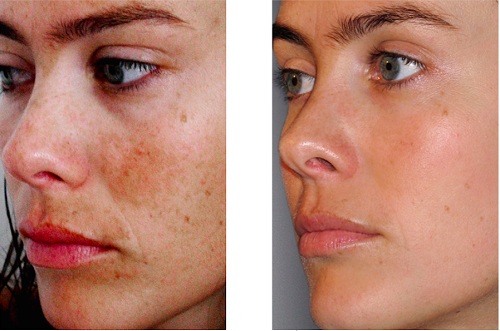
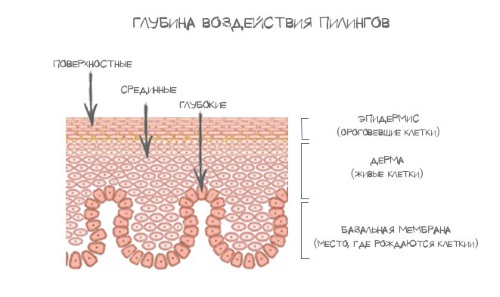
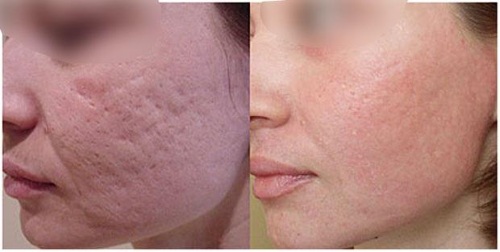
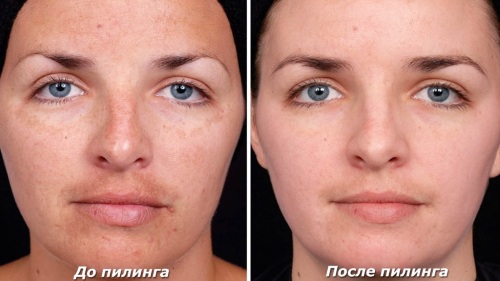
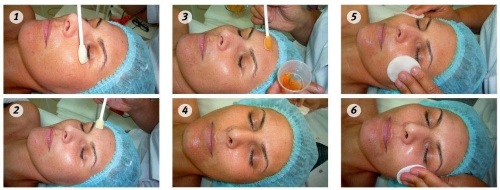
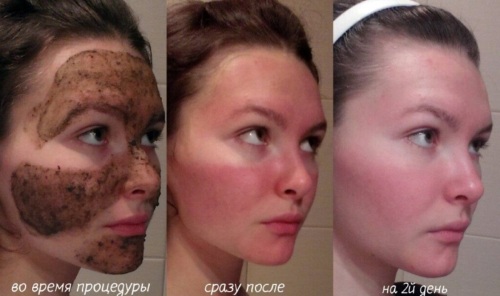
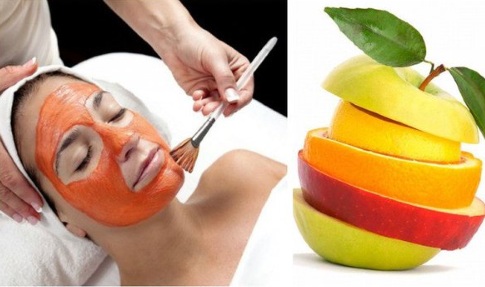
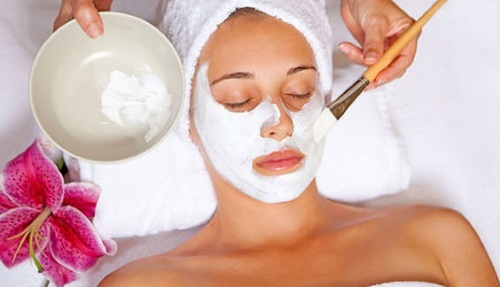
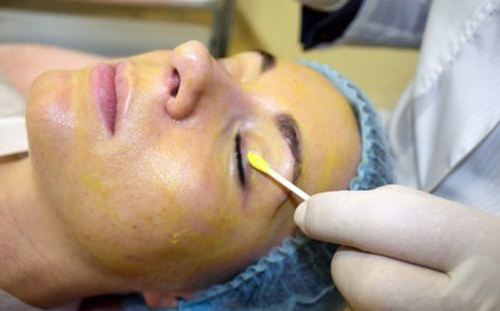
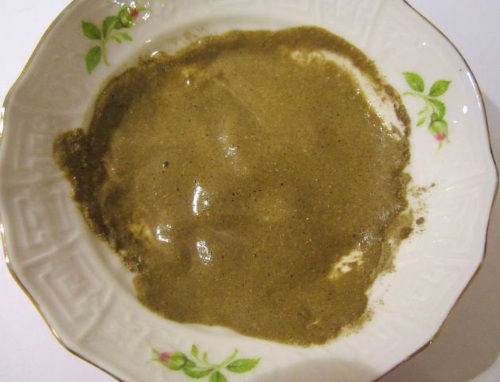
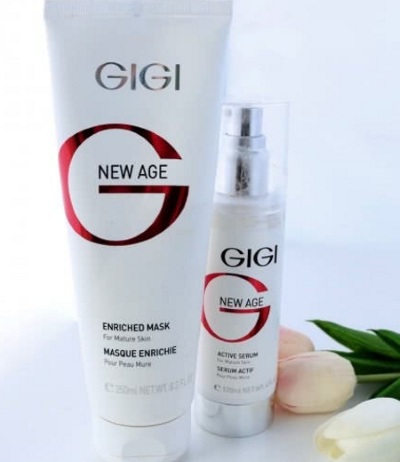
Everything suits me in this procedure, I periodically do it
To be honest, I used to be afraid of chemical peels. It seemed to me like something scary, completely burning the skin. When my beautician at Westmed advised the procedure, I was already thinking. I have been serving here for a long time and I already understand that they will not advise anything bad. I tried it and realized that I was very mistaken that I had not done such a peeling before. There is nothing terrible or terrible. If the beautician is good, you will see clear results. True, she could only go out to people on the 5th day somewhere, but it's worth it. The skin seemed to have renewed itself, became more delicate, but at the same time elastic, the color even changed. Many acquaintances asked if I had done something with my face, injections, for example.